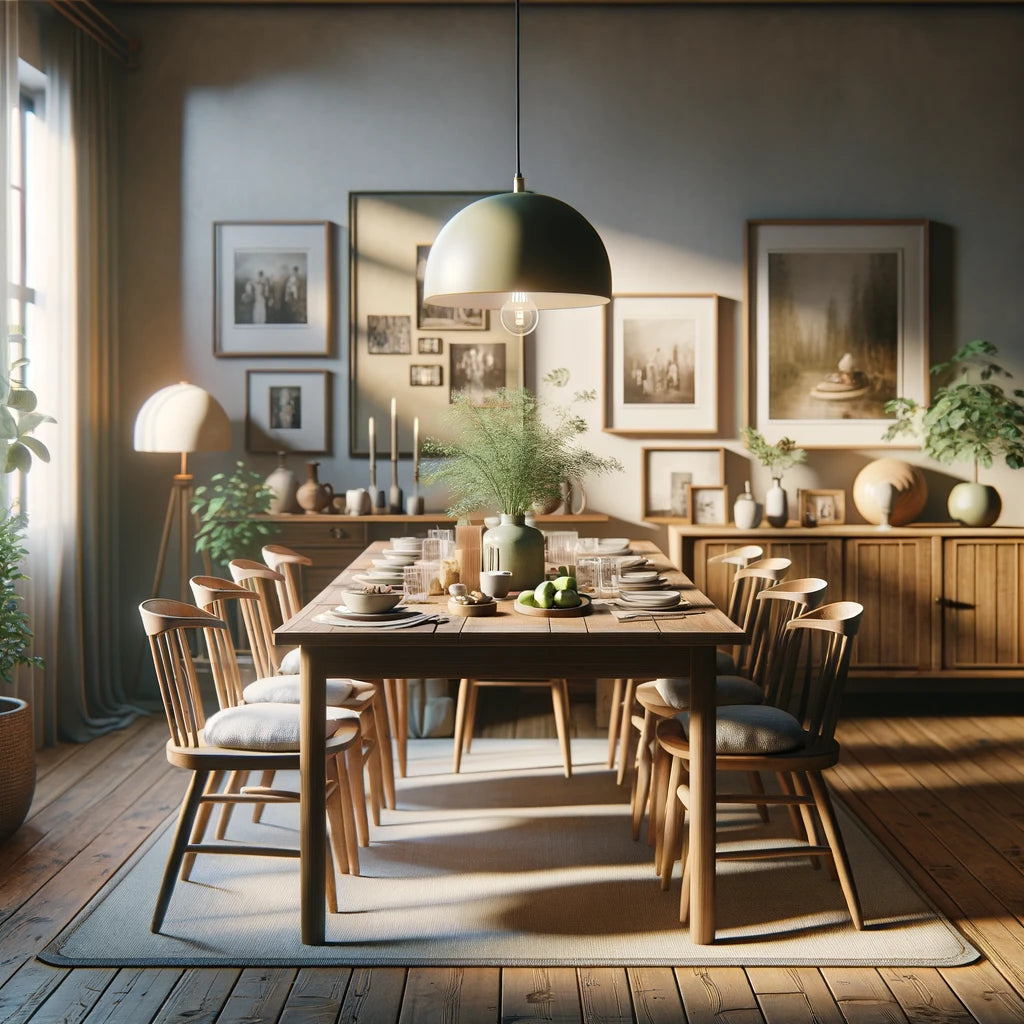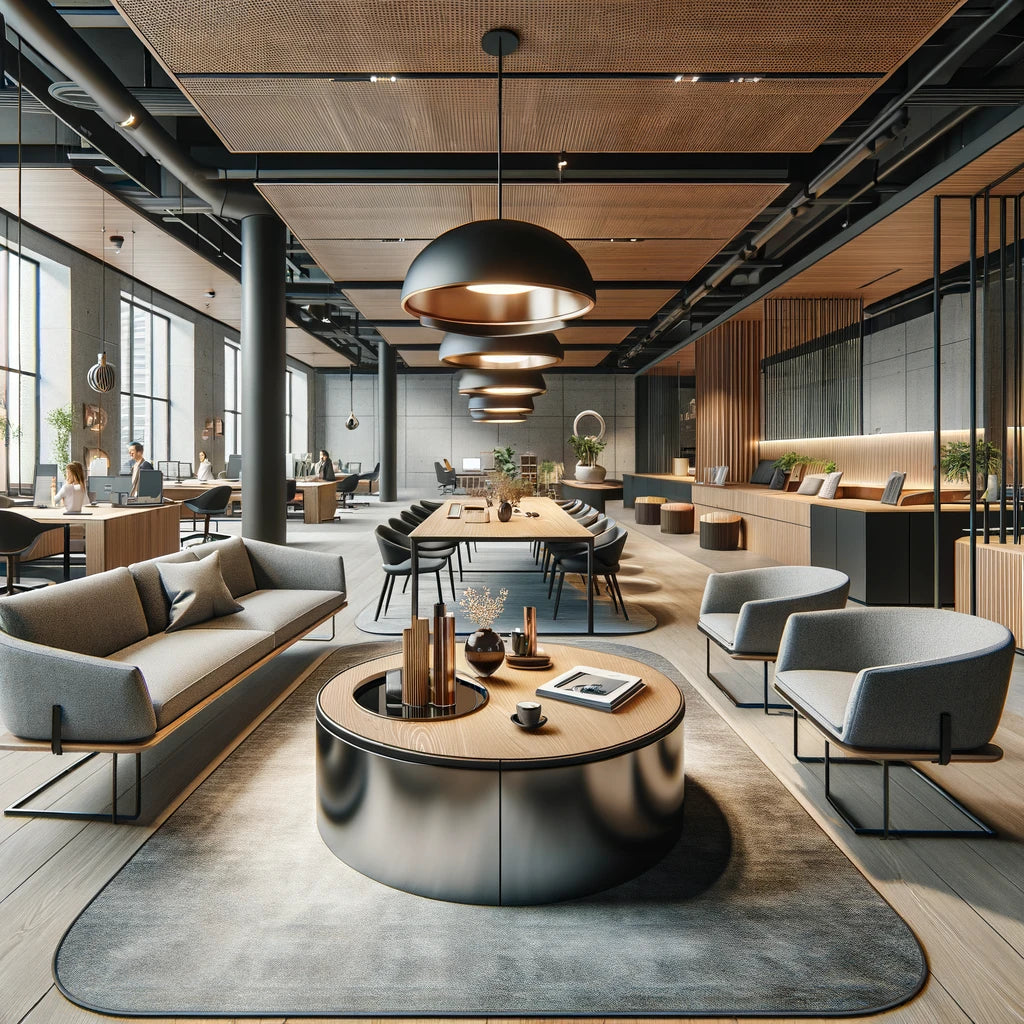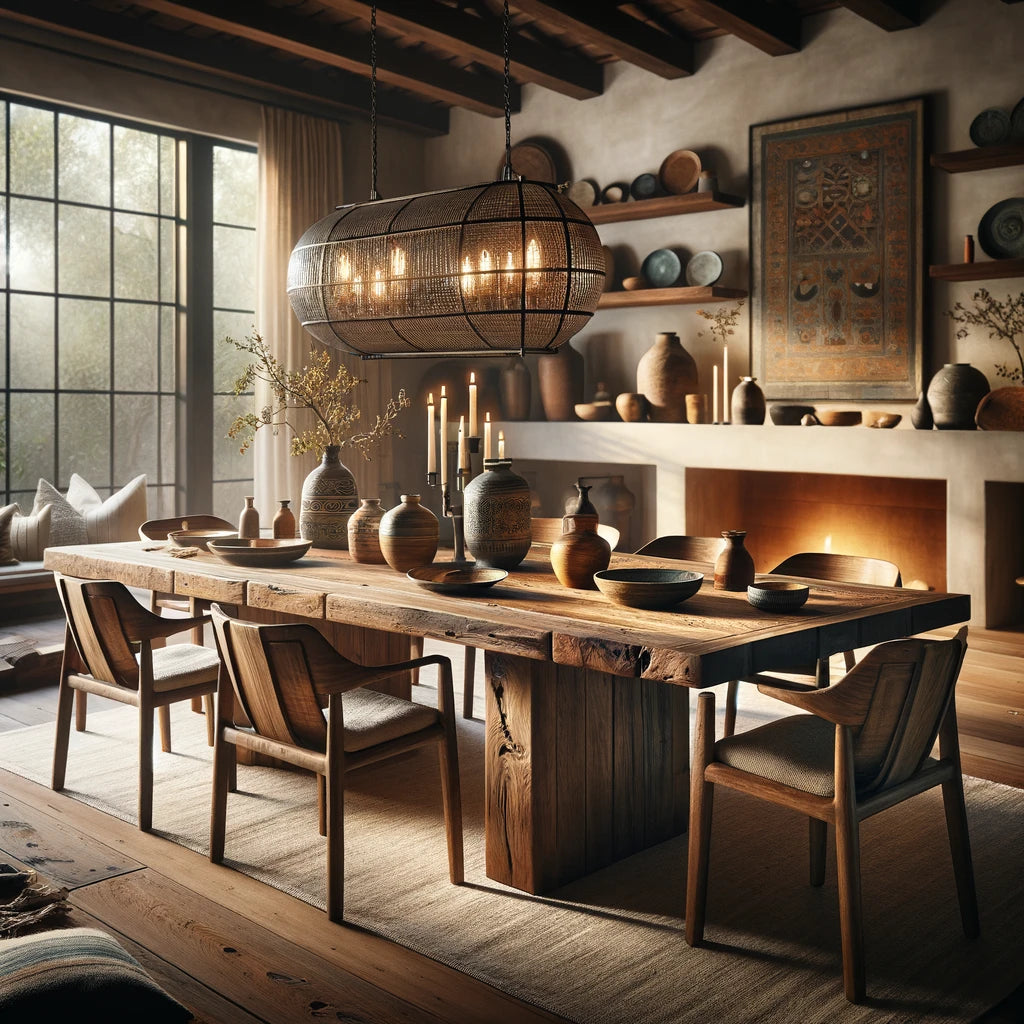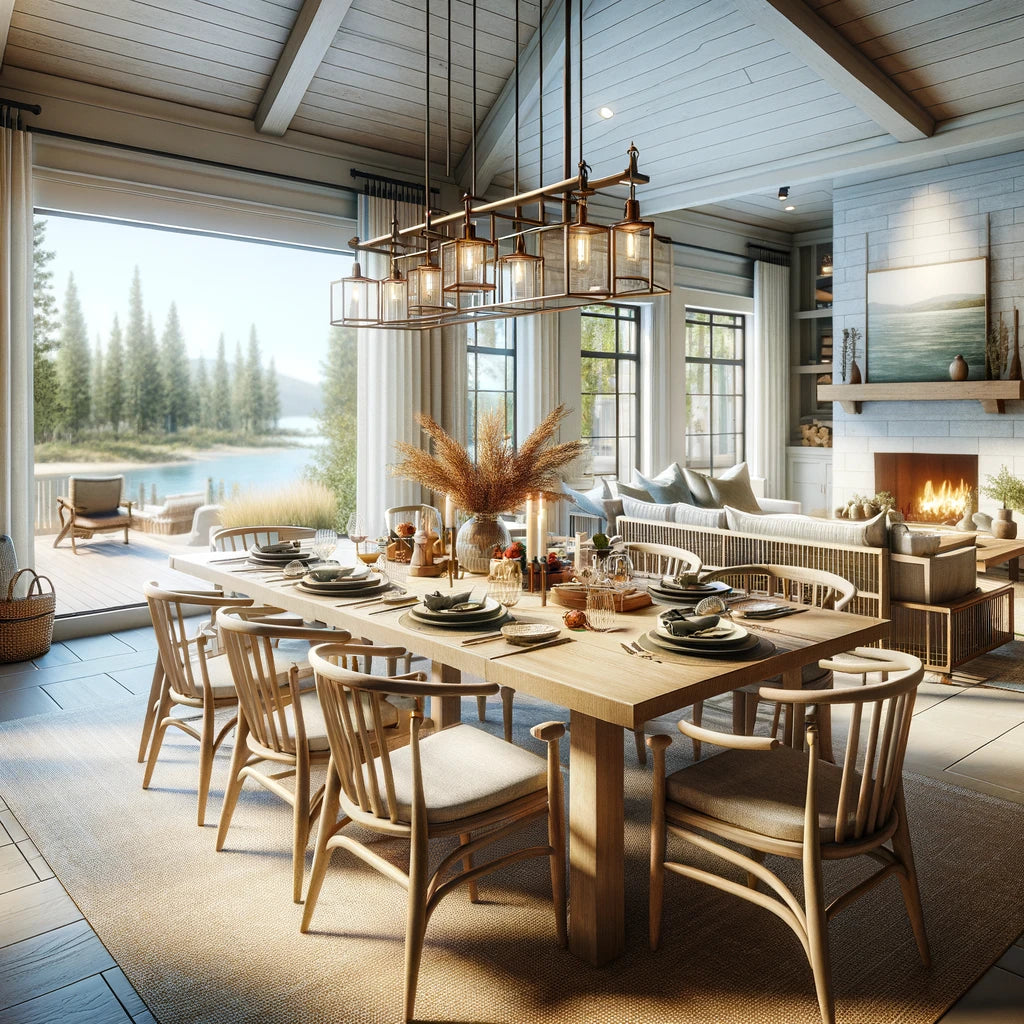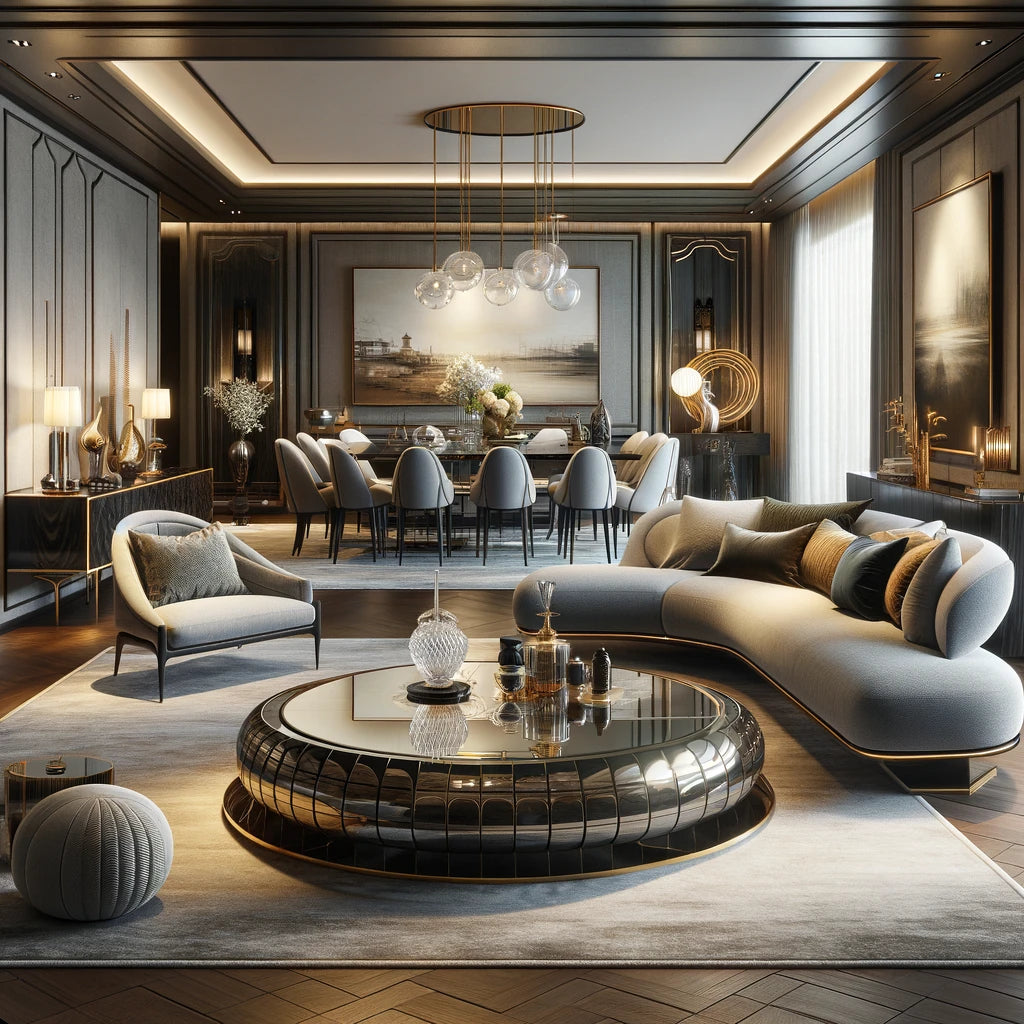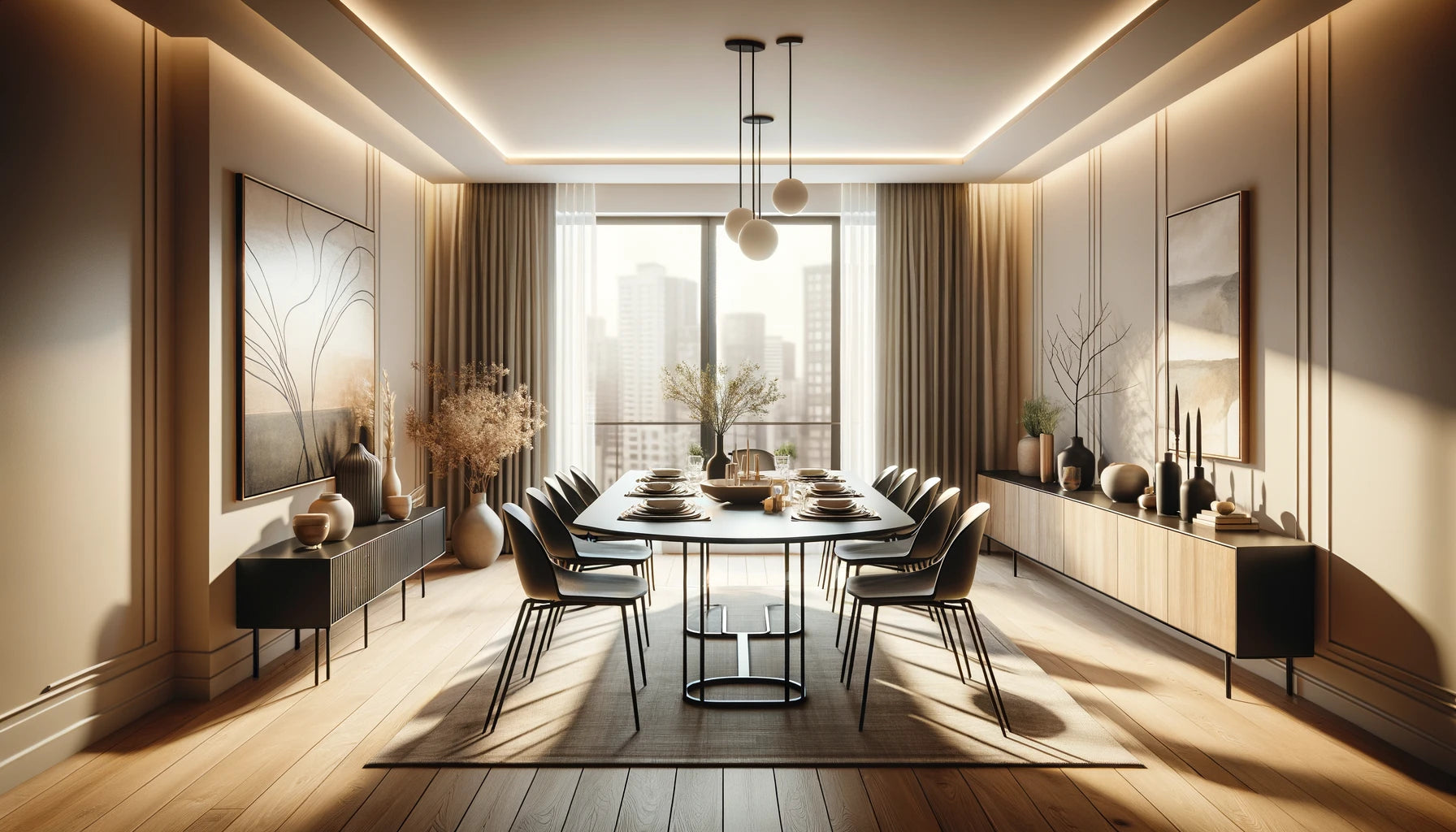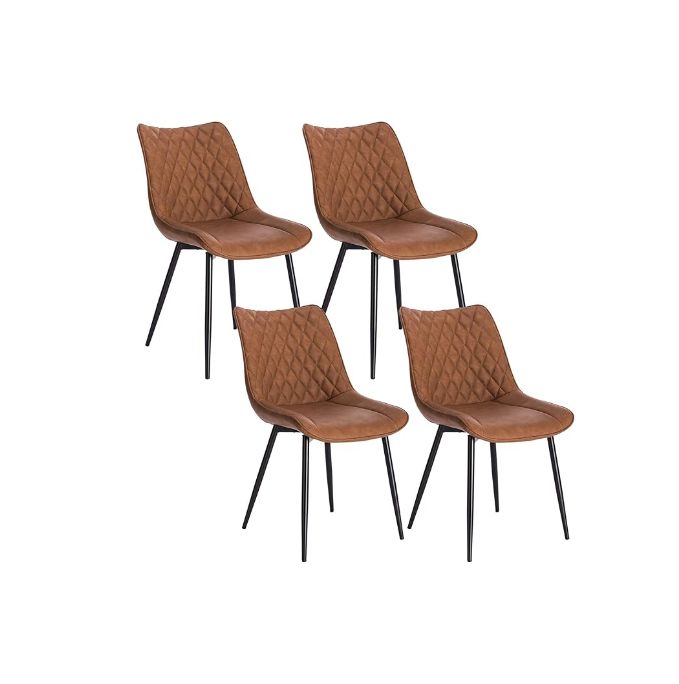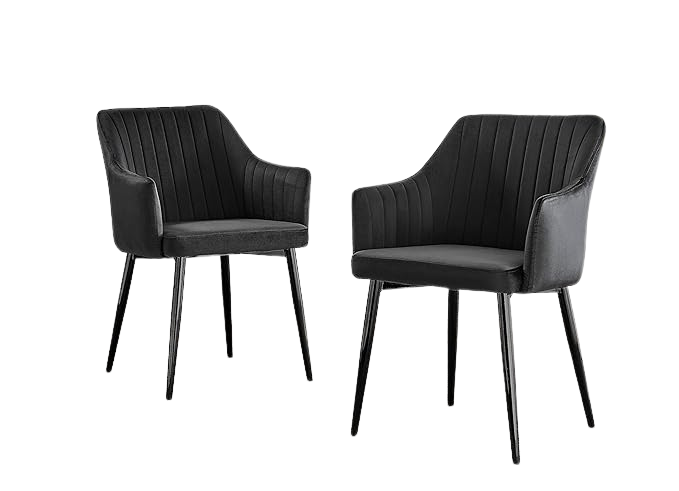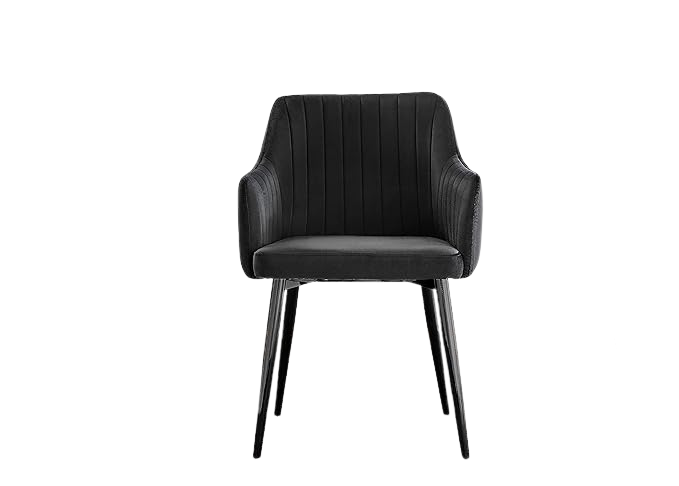Your living room reflects your personal style and taste, and the right combination of a sofa and coffee table can set the tone for this important space.
From the sleek lines of contemporary design to the warm embrace of rustic charm, each style brings its unique flavour to your home. This guide delves into various interior design styles, offering insights on how to harmoniously pair your sofa with the perfect coffee table.
Contemporary Style
Contemporary style in interior design is all about embracing the current trends and modern aesthetics.

When it comes to choosing furniture pieces like a coffee table to complement a contemporary sofa, several key design principles come into play.
- Clean Lines: Contemporary design is characterised by clean, straight lines. This means that both the sofa and the coffee table should feature crisp, uncluttered lines. Avoid ornate carvings or intricate detailing that might be more common in traditional or classic furniture styles.
- Minimalistic Design: The less is more mantra is often applied in contemporary design. Minimalistic design involves simplicity and functionality. Your coffee table should serve its purpose without unnecessary adornments. It's not just a functional piece but also contributes to the overall visual balance of the room.
-
Geometric Shapes: Geometric shapes are a hallmark of contemporary design. Look for a coffee table with a sleek, geometric shape. This could be a square, rectangular, or even an abstract shape that adds an element of visual interest to the room. Angular and well-defined shapes create a sense of order and sophistication.

- Materials: In contemporary design, materials often lean towards the use of glass, metal, and other sleek materials. A glass-top coffee table with metal legs is a perfect choice to complement a modern sectional sofa. Glass adds an airy, open feel to the room, while metal accents provide a touch of industrial chic. These materials are not only aesthetically pleasing but also durable and easy to maintain.
- Complementing the Sofa: Your coffee table should harmonise with your contemporary sofa. Consider factors like colour and texture. If your sofa is in a neutral colour, you have more flexibility in choosing the colour of your coffee table. However, if your sofa has a bold colour or pattern, you might want to opt for a more understated coffee table to balance the look.
- Functionality: While aesthetics are important, functionality should not be overlooked. A contemporary coffee table can be more than just a surface for placing items; it can also include storage compartments or additional features that cater to modern living needs. Ensure that the coffee table meets your practical requirements.
- Balance and Proportion: Achieving balance and proportion in your furniture arrangement is crucial in contemporary design. Ensure that the size and scale of the coffee table are appropriate for the sectional sofa and the room as a whole. It should neither overwhelm the space nor appear too small in comparison to the sofa.
- Personalisation: One of the advantages of contemporary design is the opportunity for personalisation. While there are certain design principles to follow, you can still choose a coffee table that reflects your unique style and preferences. Whether it's a specific colour, finish, or a distinctive design feature, make sure the coffee table resonates with your taste.

Rustic Charm
Rustic Charm is a popular interior design style that embraces the beauty of natural materials, a warm and inviting atmosphere, and a sense of nostalgia.

When combining a rustic, overstuffed leather sofa with a solid wood coffee table, you're creating a space that exudes comfort and a connection to the past. Here's a closer look at the elements involved:
- Rustic Aesthetic: Rustic style often draws inspiration from rural and countryside settings. It celebrates imperfections and the natural characteristics of materials. The use of wood, stone, and leather are key components that contribute to the rustic look.
- Leather Sofa: An overstuffed leather sofa is a quintessential piece for a rustic living room. Leather not only provides a sense of durability but also exudes a sense of warmth and timelessness. The "overstuffed" aspect adds to the comfort and cosiness of the space, inviting you to sink in and relax.
- Solid Wood Coffee Table: Pairing your leather sofa with a solid wood coffee table is a perfect choice. Solid wood furniture aligns with the rustic aesthetic as it showcases the natural beauty of wood grains. Look for a table made from hardwoods like oak, maple, or walnut, as they are not only visually appealing but also robust and long-lasting.
-
Natural and Distressed Finish: To enhance the rustic feel, opt for a coffee table with a natural or distressed finish. This finish highlights the wood's natural imperfections and patina, giving it character and charm. It should look weathered or aged, as if it has a story to tell. Reclaimed wood is an excellent option, as it adds a sense of history to the room.

- Warm and Cosy Ambiance: The combination of leather and wood creates a warm and cosy atmosphere in the room. This is accentuated by earthy and warm colour palettes, which are often found in rustic interior design. Consider incorporating soft, textured fabrics for throw pillows and blankets to further enhance the comfort factor.
- Accessories: To complete the rustic charm, consider adding accessories like vintage or handcrafted décor items, such as wooden crates, woven baskets, and antique lanterns. These details contribute to the overall rustic theme and make the space feel more inviting.
- Balance in Scale: Ensure that the scale and proportion of the coffee table are appropriate for the size of the sofa and the room. A larger, substantial coffee table can complement the overstuffed sofa effectively and provide ample surface area for practical use.
- Lighting: Rustic living rooms often feature warm and ambient lighting. Consider incorporating fixtures like wrought iron chandeliers, table lamps with burlap shades, or even candle sconces to add to the cosy atmosphere.

Mid-Century Modern
Mid-Century Modern is a design style that emerged in the mid-20th century, primarily during the 1950s and 1960s.

It's known for its emphasis on simplicity, clean lines, and a harmonious blend of form and function. When creating a mid-century modern living space, it's essential to select furniture and decor that reflect this iconic style. Here's an elaboration on how to pair Mid-Century Modern sofas with coffee tables to achieve an authentic look:
- Characteristics of Mid-Century Modern Style:
- Clean Lines: Mid-century modern design prioritises clean, uncluttered lines. Furniture pieces often have crisp, straight lines or gentle curves, creating a sense of simplicity and elegance.
- Tapered Legs: One of the signature features of mid-century modern furniture is tapered legs. Sofas, chairs, and tables commonly have slim, angled legs that give the pieces an elevated and airy appearance.
- Streamlined Form: Furniture pieces are designed with functionality in mind. The form follows function, resulting in streamlined and efficient designs that are both aesthetically pleasing and practical.
- Use of Natural Materials: Mid-century modern design often incorporates natural materials such as wood, leather, and metal. These materials contribute to a warm and inviting atmosphere.
-
Geometric Shapes: Geometric shapes, including rectangles, squares, circles, and ovals, are prevalent in mid-century modern design. These shapes add visual interest and balance to the overall look.

- Selecting the Right Coffee Table:
- Oval Shapes: When pairing a Mid-Century Modern sofa with a coffee table, consider choosing one with an oval shape. Oval tables complement the curves and soft lines often found in mid-century furniture.
- Slim, Angled Legs: Match the coffee table's legs with the tapered legs of the sofa and other furniture pieces. Slim, angled legs create a cohesive and harmonious look throughout the room.
- Materials: Opt for coffee tables made of natural materials like wood or materials that were popular during the mid-century era, such as teak or walnut. These materials add authenticity to the design.
- Minimalist Design: Keep the design of the coffee table simple and uncluttered. Avoid excessive ornamentation or overly intricate details, as these go against the minimalist principles of mid-century modern design.
- Colour Palette: Mid-century modern colour palettes often feature a combination of muted, earthy tones and bold, vibrant hues. Consider the colour of your sofa and how it coordinates with the coffee table. You can choose a table that complements the sofa's colour or opt for a contrasting yet complementary shade to add visual interest.
- Accessories: Enhance the mid-century modern ambiance with carefully chosen accessories. This may include geometric-patterned area rugs, abstract art, and decorative items from the same era. These details contribute to the overall authenticity of the design.
- Lighting: Mid-century modern lighting fixtures, such as pendant lights with clean, geometric shapes and floor lamps with thin, slender profiles, can further enhance the ambiance of the room.

Traditional Elegance
Traditional Elegance is a timeless interior design style that exudes a sense of sophistication, refinement, and classic charm.

When pairing a traditional sofa with a coffee table, it's important to select a table that complements the ornate details and plush fabrics of the sofa. Here's an elaboration on how to achieve this classic and elegant look:
- Characteristics of Traditional Style:
- Ornate Details: Traditional furniture often features intricate carvings, mouldings, and decorative embellishments. These details add a sense of opulence and craftsmanship to the pieces.
- Plush Fabrics: Upholstery in traditional design tends to use luxurious fabrics like velvet, silk, or damask. These fabrics contribute to the sumptuous and inviting feel of the space.
- Rich Wood Tones: Traditional interiors frequently incorporate dark and rich wood tones, such as mahogany, cherry, or walnut. Wooden furniture pieces play a significant role in this style.
-
Classic Silhouettes: Furniture in traditional style showcases classic and time-honoured silhouettes. Sofas often have rolled arms, tufted backs, and curvaceous shapes.

- Selecting the Right Coffee Table:
- Classic Wooden Table: To complement a traditional sofa, opt for a coffee table crafted from wood. Choose a table with rich wood tones that match or harmonise with the wood finish of your sofa and other furniture pieces.
- Carved Details: Look for a coffee table with carved legs, intricate detailing, or mouldings that echo the ornate elements of your traditional sofa. This adds a cohesive and elegant touch to the room.
- Shape and Proportions: Consider the size and shape of the coffee table. In traditional interiors, rectangular or oval tables are common choices. Ensure that the table's proportions are balanced with the size of your sofa and the available space.
- Finish: Pay attention to the finish of the coffee table. A glossy or polished finish can enhance the elegance, while a distressed or antique finish can add character and a sense of history.
- Accessories: Decorate the coffee table with carefully chosen accessories that enhance the traditional elegance of the room. This may include items like decorative trays, classic table lamps with fabric shades, and a selection of books or decorative boxes.
- Upholstered Furniture: If your traditional sofa has fabric upholstery, consider coordinating the coffee table with the sofa by using similar fabric or colours for decorative items like table runners or cushions.
- Rugs: An area rug with a classic pattern or Oriental design can anchor the seating area and tie the sofa and coffee table together.
- Lighting: Traditional-style lighting fixtures, such as chandeliers or sconces with ornate details, can further elevate the elegance of the room.
- Symmetry: Traditional design often favours a sense of symmetry. Arrange the coffee table and other furniture pieces in a balanced and symmetrical manner for a harmonious look.

Bohemian Vibes
Bohemian Vibes represent a free-spirited and eclectic interior design style that celebrates creativity, individuality, and a sense of wanderlust.

When pairing a Bohemian-style sofa with a coffee table, the goal is to embrace a mix of colours, patterns, and unconventional designs that exude warmth and personality. Here's how to achieve a Bohemian look with your sofa and coffee table:
- Characteristics of Bohemian Style:
- Eclectic Mix: Bohemian interiors thrive on diversity. They combine elements from various cultures, eras, and styles to create a harmonious, mismatched aesthetic.
- Colourful Palette: Bohemian spaces often feature a vibrant and rich colour scheme. Bold, saturated hues and earthy tones are commonly used.
- Patterns Galore: Embrace a wide range of patterns, including paisley, floral, tribal, and geometric. Mixing and layering these patterns can create a visually stimulating environment.
- Natural Materials: Bohemian design incorporates natural materials like rattan, wicker, jute, and textiles such as cotton and linen.
-
Artistic Touch: Personal art, handcrafted items, and unique, one-of-a-kind pieces play a significant role in Bohemian interiors.

- Selecting the Right Coffee Table:
- Unique and Artistic: For a Bohemian-style sofa, choose a coffee table that stands out as a work of art. Look for tables with unconventional shapes, handcrafted designs, or artistic detailing.
- Cultural Influences: Consider coffee tables that draw inspiration from different cultures, such as Moroccan, Indian, or African designs. A round Moroccan-inspired table with intricate patterns and details can be a fantastic choice.
- Materials and Textures: Opt for tables made from natural materials like wood, rattan, or metal, which align with the Bohemian aesthetic. Tables with interesting textures or distressed finishes can add character.
- Mismatched Elements: Don't be afraid to mix and match styles. A vintage, repurposed, or upcycled coffee table can add an authentic and Bohemian touch to your living space.
- Accessories: Decorate the coffee table with an assortment of eclectic accessories, such as decorative trays, candles, potted plants, or global-inspired decor items like lanterns, textiles, or small sculptures.
- Color Coordination: While Bohemian style embraces a mix of colours, try to harmonise the coffee table's colour palette with the sofa and other elements in the room to create a cohesive look.
- Layered Rugs: Place layered rugs under the coffee table to introduce additional patterns, textures, and colours into the space.
- Plants and Greenery: Bohemian interiors often incorporate indoor plants and greenery. Adding potted plants around the coffee table can infuse life and freshness into the room.
- Personal Art and Décor: Display personal artwork, travel souvenirs, or items collected from your adventures to add a sense of personal storytelling to your Bohemian-inspired living room.

Scandinavian Simplicity
Scandinavian Simplicity is a design style characterised by its minimalist and functional approach.

When pairing a Scandinavian-style sofa with a coffee table, the aim is to create a harmonious and uncluttered look that reflects the core principles of Scandinavian design. Here's how to achieve Scandinavian simplicity with your sofa and coffee table:
- Characteristics of Scandinavian Style:
- Minimalism: Scandinavian design is all about simplicity. It emphasises clean lines, uncluttered spaces, and a "less is more" philosophy.
- Functionality: Furniture in Scandinavian interiors is designed with a focus on usability and practicality. Each piece serves a purpose and often incorporates storage solutions.
- Light and Airy: Light colour palettes, particularly whites, soft greys, and light woods, dominate Scandinavian design to create an airy and open feel.
- Natural Materials: The use of natural materials like light wood, such as pine or birch, and textiles like wool and linen is prevalent in Scandinavian interiors.
-
Cosy Textures: To counterbalance the minimalism, add warmth and cosiness through the use of soft textiles, such as throws and cushions.

- Selecting the Right Coffee Table:
- Clean and Simple: For a Scandinavian-style sofa, opt for a coffee table with clean lines and a simple design. Look for tables with minimal ornamentation or unnecessary embellishments.
- Light Wood Finishes: Light wood finishes, such as natural oak or birch, are quintessentially Scandinavian. They add warmth and a sense of nature to the space.
- Functional Features: Consider coffee tables that offer additional functionality, such as built-in storage shelves or drawers. This aligns with the practicality aspect of Scandinavian design.
- Geometric Shapes: Tables with geometric shapes, such as squares or rectangles, often fit well with the clean and structured lines of Scandinavian furniture.
- Color Coordination: Ensure that the coffee table's colour and finish harmonise with the sofa and other elements in the room, maintaining a light and airy colour palette.
- Minimalist Decor: Keep decor items on the coffee table to a minimum. A few carefully chosen, functional decor pieces, such as a vase with fresh flowers or a tray with candles, can enhance the simplicity of the design.
- Neutral Tones: Consider neutral-coloured upholstery for your Scandinavian sofa to maintain the light and uncluttered atmosphere. Soft grays, whites, and light beige are popular choices.
- Textural Contrast: To add visual interest without clutter, incorporate textural contrast through the use of cushions, throws, and area rugs. These elements can introduce cosiness to the space.
- Lamps and Lighting: Scandinavian design often emphasises the importance of natural light. Use floor or table lamps with simple, modern designs to enhance the lighting in the room.

Conclusion
Choosing the right coffee table to complement your sofa is an art that enhances the overall ambiance of your living space.
Whether you lean towards the minimalistic appeal of Scandinavian design, the timeless elegance of traditional decor, or the eclectic allure of Bohemian style, the key lies in balancing aesthetics, functionality, and personal style. Remember, your living room is a reflection of your personal journey – make it uniquely yours with the perfect blend of sofa and coffee table styles.


